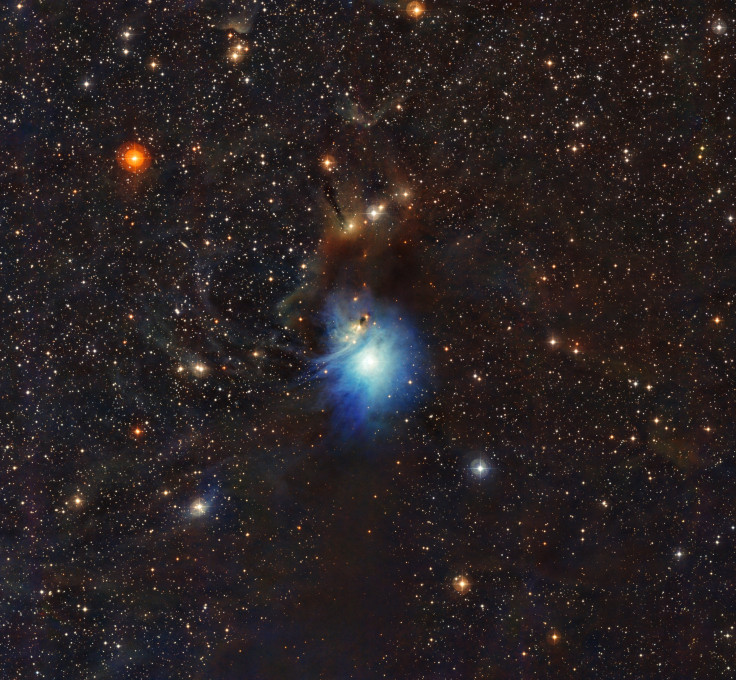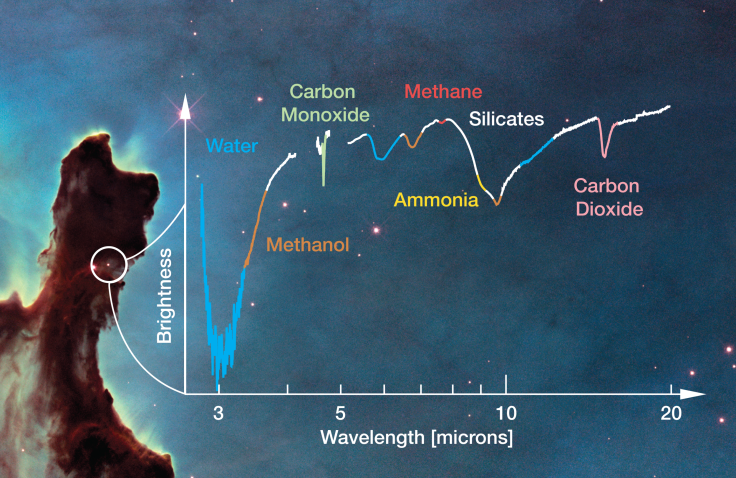NASA’s James Webb Space Telescope Will Find Interstellar Water In Molecular Clouds

Currently slated for a launch in the spring of 2019, NASA’s James Webb Space Telescope (JWST) will be humankind’s most powerful eye in the sky till date once it is up in orbit. Among other things scientists hope it will find and study, it will also look for water in interstellar space.
Interstellar space refers to the large distances between the spheres of influence of stars. Far from being a vacuum, these spaces are full of dust, gas and a myriad of chemical molecules — ranging from the simplest element hydrogen to complex carbon-containing organic compounds. These chemicals don’t drift in space by themselves, but need the protection of a molecular cloud to survive the ultraviolet radiation in space.
Molecular clouds of massive interstellar clouds within which the dust protects the water and other compounds from damaging radiation, and the conditions inside also promote chemical reactions. These clouds contain the bulk of all the water present in the universe, and the Webb Telescope will study one such cosmic reservoir.

Hydrogen and oxygen atoms come together on the surfaces of tiny dust particles inside molecular clouds to form water, while hydrogen and carbon combine to form hydrocarbons, both necessary ingredients for life as we know it. Ammonia, another important constituent, is formed when hydrogen and nitrogen come together. Over millennia, as more molecules stick to the dust surfaces, they accumulate layers of ice.
“If we can understand the chemical complexity of these ices in the molecular cloud, and how they evolve during the formation of a star and its planets, then we can assess whether the building blocks of life should exist in every star system,” Melissa McClure of the Universiteit van Amsterdam, the principal investigator on a NASA research project to investigate cosmic ices, said in a statement Friday.
One of JWST’s projects will investigate a star-forming region (molecular clouds are also stellar nurseries — birthplaces of stars) relatively close to Earth, the Chamaeleon Complex. This region is about 500 light-years away, and is home to several hundred protostars, none older than 1 million years (our star, the sun, is about 4.5 billion years old.)
“We plan to use a variety of Webb’s instrument modes and capabilities, not only to investigate this one region, but also to learn how best to study cosmic ices with Webb,” said Klaus Pontoppidan of the Space Telescope Science Institute (STScI), an investigator on McClure’s project.
To do this, Webb will use its sensitive infrared detectors to look at the light coming from the young, faint stars in molecular clouds. As the light moves through the cloud, ices within the cloud would absorb specific wavelengths, and based on observation of multiple stars in the cloud, a map of the ices could be formed, which would allow scientists to determine where within the cloud the ices form.
JWST is a NASA project in partnership with the European Space Agency and Canadian Space Agency.
© Copyright IBTimes 2024. All rights reserved.











